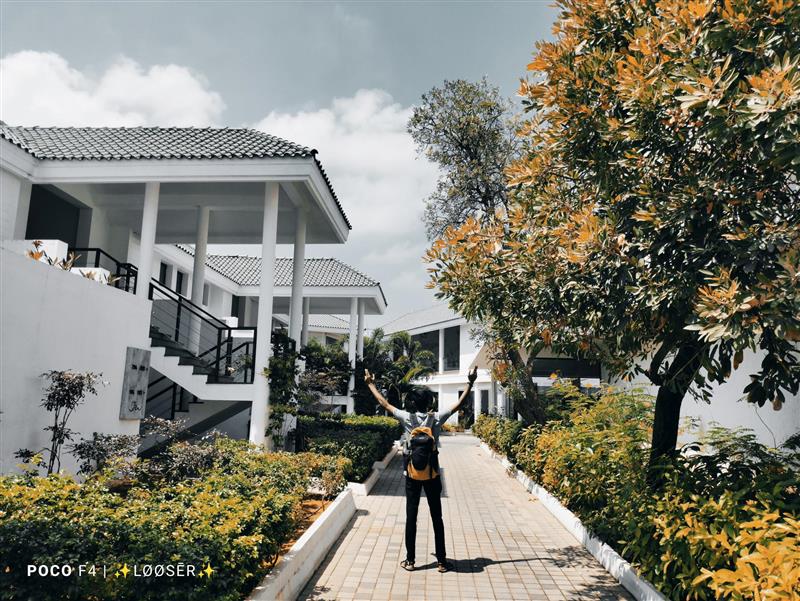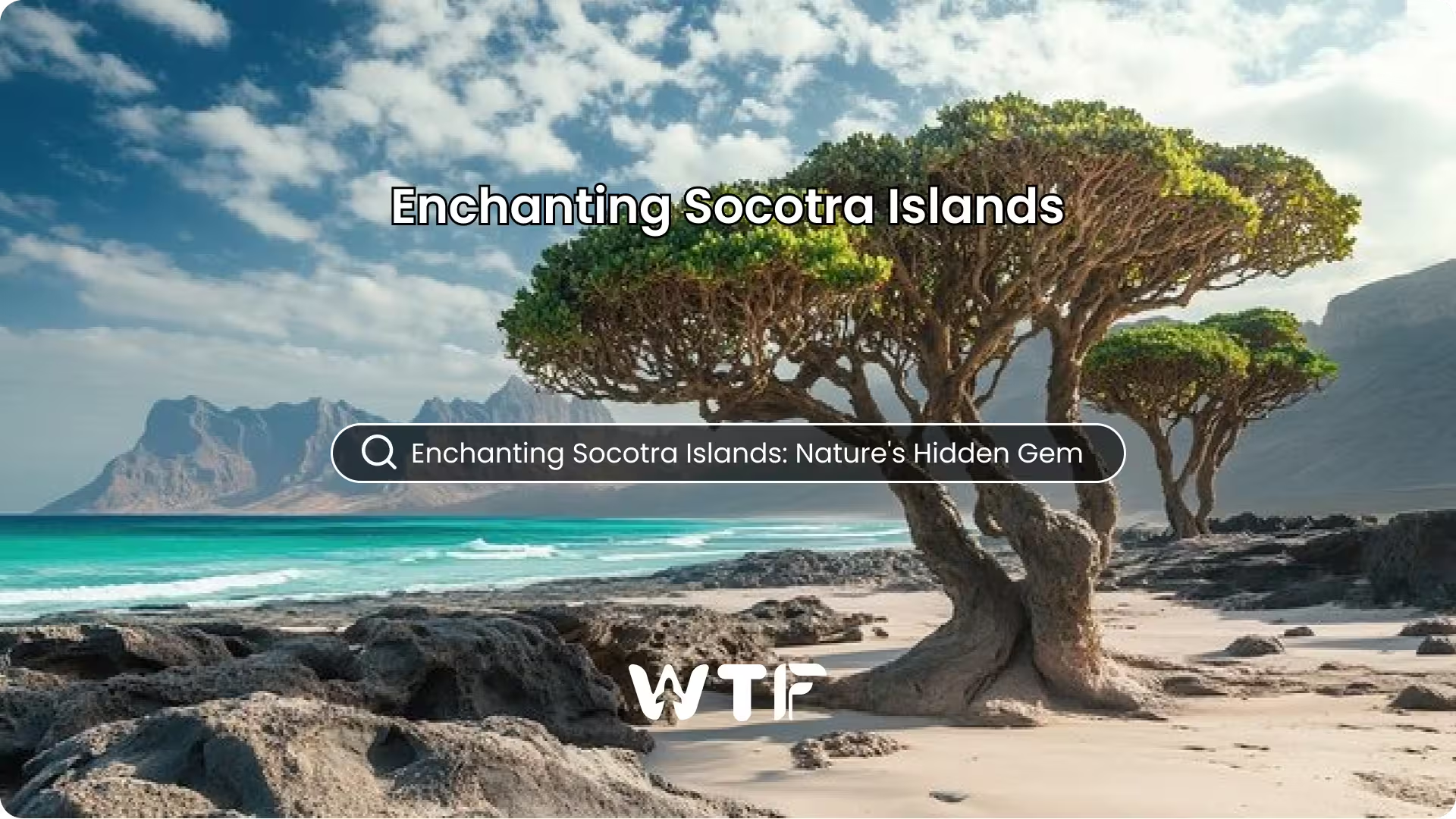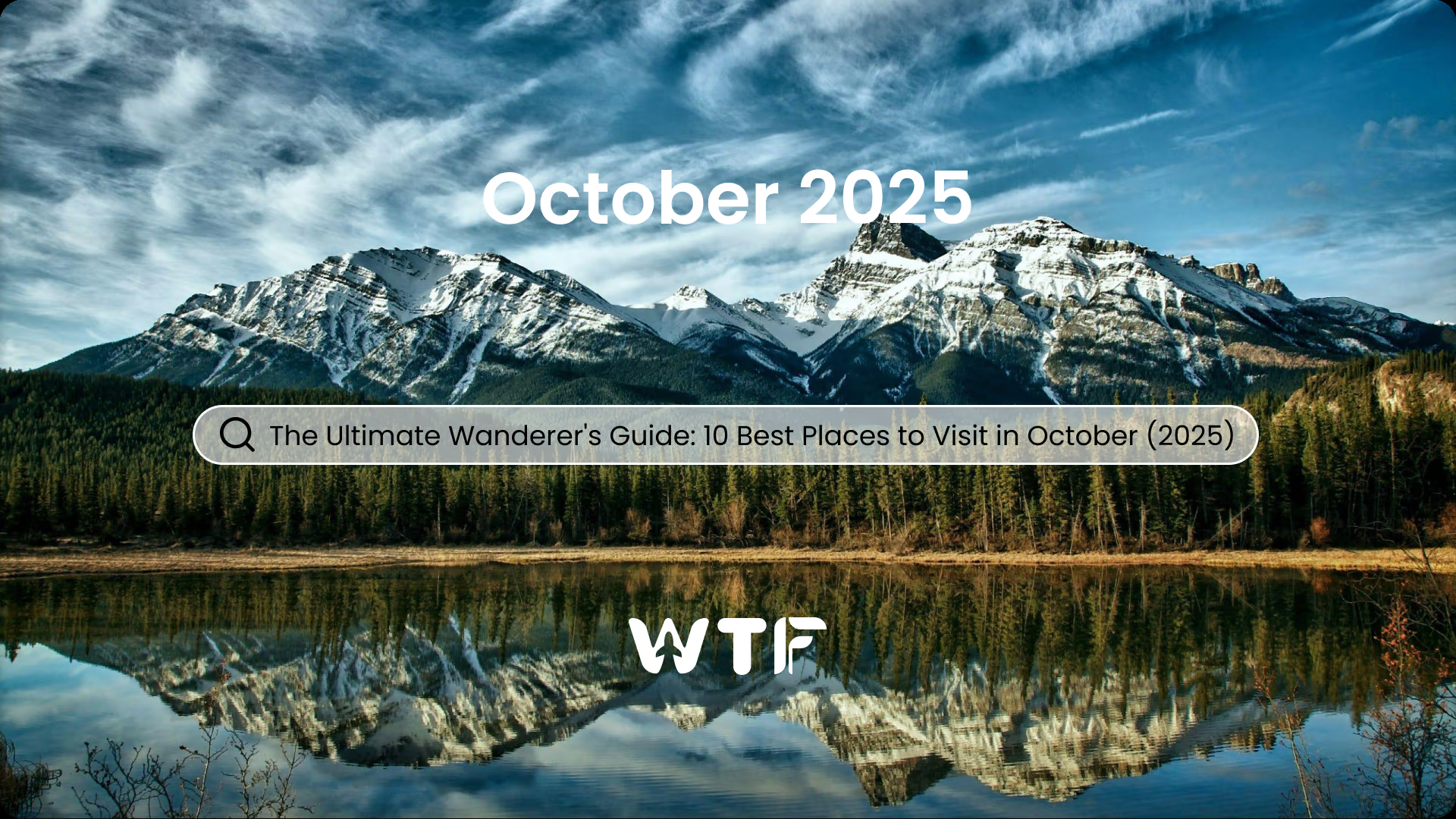Nestled in the Indian Ocean, off the coast of Yemen, lies a mesmerizing archipelago known as the Socotra Islands. Renowned for its unique and otherworldly landscapes, Socotra has earned the title of “the Galápagos of the Indian Ocean.” In this blog, we’ll delve into the rich tapestry of this isolated paradise, exploring its distinctive flora, fauna, and cultural heritage.
Breathtaking Biodiversity
The Socotra archipelago is a UNESCO World Heritage Site, celebrated for its unparalleled biodiversity. The islands host a myriad of endemic species, some of which are found nowhere else on Earth. The iconic Dragon’s Blood Tree, with its umbrella-like canopy and crimson resin, stands as an emblem of Socotra’s botanical wonders. Visitors are also captivated by the cucumber tree, bottle trees, and the rare Socotran pomegranate.
Unique Wildlife
Socotra’s isolation has given rise to a variety of unique animal species. The Socotra Desert Gecko and Socotra Starling are just a couple of the endemic creatures that have adapted to the islands’ distinct ecosystems. The waters surrounding Socotra are teeming with marine life, making it a haven for divers and snorkelers. Dolphins, turtles, and vibrant coral reefs contribute to the archipelago’s allure beneath the waves.
Mystical Landscapes
The landscape of Socotra is like no other, featuring a surreal blend of deserts, mountains, and coastal plains. The Haghier Mountains dominate the skyline, offering breathtaking vistas of the surrounding terrain. The landscape’s lunar-like appearance has even attracted filmmakers seeking an otherworldly backdrop. The white sand dunes of Stero, contrasting with the deep blue sea, create a picture-perfect scene that leaves a lasting impression on all who visit.
Exploring the Must-Visit Tourist Destinations in Socotra Islands
1. Place: Homhil Plateau
The Homhil Plateau, situated in the Haghier Mountains, offers a breathtaking panorama of Socotra’s unique landscape. With its elevated vantage point, visitors are treated to sweeping views of the coastline, deep canyons, and the Dragon’s Blood Trees below
- Activities:
- Hiking: Explore the well-marked trails that lead through the plateau, providing an opportunity to witness the diverse flora and fauna.
- Photography: Capture the stunning sunrise or sunset as the sunlight bathes the landscape in warm hues.
- Bird Watching: The plateau is home to various bird species, including the Socotra Starling, making it a paradise for bird enthusiasts.
- Local Transport: To reach Homhil Plateau, hire a local guide with a 4×4 vehicle. The journey involves navigating through mountainous terrain, and a knowledgeable guide can enhance the experience.
- Accommodation: While there may not be hostels directly on the plateau, staying in nearby Hadibu or Qalansiyah and arranging a day trip is a common practice. Homestays with local families may be available, providing an authentic experience of Socotra’s hospitality.
- Entry Fee: There may be a nominal entry fee to access the plateau, and it’s advisable to check with local authorities for the latest information.
2. Place: Qalansiyah Beach
Qalansiyah Beach stands out with its pristine white sand and crystal-clear turquoise waters. The beach is known for its unique blend of landscapes, featuring limestone cliffs, dunes, and an inviting shoreline
- Activities:
- Snorkeling: Explore the vibrant underwater world teeming with marine life, including colorful fish and coral formations.
- Relaxation: Unwind on the beach, soaking in the sun and enjoying the tranquility of this secluded coastal paradise.
- Camel Riding: Experience a traditional mode of transport by taking a camel ride along the shoreline.
- Local Transport: From Hadibu or the nearby town of Qalansiyah, you can hire a local taxi or arrange for a guided tour to reach Qalansiyah Beach.
- Accommodation: Limited accommodations may be available in Qalansiyah or Hadibu. Hostels are scarce, but homestays or guesthouses provide an authentic stay experience.
- Entry Fee: There may be a small entry fee, and it’s advisable to confirm with local authorities or your tour guide.
3. Place: Dixam Plateau
Dixam Plateau, another elevated wonder in Socotra, boasts a surreal landscape dotted with Dragon’s Blood Trees. The plateau’s unique flora and panoramic views make it a must-visit destination for nature enthusiasts.
- Activities:
- Photography: Capture the iconic Dragon’s Blood Trees against the backdrop of the plateau’s elevated terrain.
- Botanical Exploration: Learn about the diverse plant species that have adapted to thrive in this high-altitude environment.
- Stargazing: With minimal light pollution, Dixam Plateau offers an ideal setting for stargazing on clear nights.
- Local Transport: Hire a local guide with a 4×4 vehicle to navigate the challenging terrain and reach Dixam Plateau. Local guides are familiar with the routes and can enhance your experience with insights into the region.
- Accommodation: Similar to Homhil Plateau, accommodation options may be available in nearby towns like Hadibu or Qalansiyah. Homestays provide an immersive experience with the local culture.
- Entry Fee: Check with local authorities or your guide for any applicable entry fees.
4. Place: Dihamri Marine Protected Area
Dihamri Marine Protected Area is a haven for marine life, offering pristine coral reefs, mangroves, and clear blue waters. It is a designated conservation area aimed at preserving Socotra’s underwater ecosystems.
- Activities:
- Snorkeling and Diving: Immerse yourself in the vibrant underwater world, exploring coral gardens and encountering a variety of marine species.
- Mangrove Kayaking: Navigate through the mangrove forests, observing the unique ecosystem and birdlife.
- Bird Watching: The area is home to numerous bird species, making it a paradise for birdwatchers.
- Local Transport: Arrange for a guided boat tour from Qalansiyah or Dihamri village to reach the marine protected area. Local fishermen may offer boat trips, providing an opportunity to support the community.
- Accommodation: Limited accommodations may be available in Dihamri village. Homestays or guesthouses offer an immersive experience, and some may arrange boat tours for guests.
- Entry Fee: Due to its protected status, there might be an entry fee to access the marine protected area. Confirm with local authorities or your tour operator.
5. Place: Aomak Beach
Aomak Beach captivates visitors with its unique landscape, featuring massive sand dunes that meet the turquoise waters of the Indian Ocean. The juxtaposition of the desert and the sea creates a surreal setting.
- Activities:
- Sandboarding: Experience the thrill of sliding down the towering sand dunes overlooking the ocean.
- Beachcombing: Explore the beach and discover seashells, coral fragments, and other treasures washed ashore.
- Sunset Viewing: Aomak Beach is renowned for its stunning sunsets. Find a tranquil spot and witness the sky ablaze with hues of orange and pink.
- Local Transport: Arrange for a local taxi or guided tour to reach Aomak Beach from Hadibu or Qalansiyah. The journey may involve traversing sandy tracks, so a 4×4 vehicle is recommended.
- Accommodation: Limited accommodations may be available in the nearby towns. Homestays or guesthouses provide an opportunity to connect with the local community.
- Entry Fee: Confirm with local authorities or your guide for any applicable entry fees.
Exploring Socotra’s Hidden Treasures: 5 Unexplored Gems
1. Place: Detwah Lagoon
Detwah Lagoon is a hidden gem, nestled between cliffs and offering a serene setting. The still turquoise waters are surrounded by golden sand dunes and create a picturesque landscape.
- Activities:
- Kayaking: Paddle through the calm waters of the lagoon, surrounded by the breathtaking cliffs and dunes.
- Bird Watching: The lagoon attracts various bird species, making it an ideal spot for birdwatching.
- Relaxation: Enjoy a peaceful day on the secluded beach, taking in the natural beauty and tranquility.
- Local Transport: Reach Detwah Lagoon by hiring a local guide with a 4×4 vehicle. The journey involves navigating through uneven terrain, and local guides are familiar with the routes.
- Accommodation: There may not be hostels directly at Detwah Lagoon, but staying in nearby Hadibu and arranging a day trip is common. Homestays with local families can provide an authentic experience.
- Entry Fee: Detwah Lagoon is relatively undiscovered, and there might not be an entry fee. However, it’s advisable to confirm with local authorities or your guide.
2. Place: Rosh Marine Protected Area
Rosh Marine Protected Area is a secluded coastal area with pristine coral reefs and diverse marine life. The underwater landscapes here are less explored, offering a unique opportunity for adventurous snorkelers and divers.
- Activities:
- Snorkeling and Diving: Explore untouched coral reefs and encounter a variety of marine species in clear, unpolluted waters.
- Fishing: Engage in traditional fishing activities with local fishermen, learning about sustainable practices.
- Beach Camping: Experience a night under the stars by camping on the quiet beaches of the marine protected area.
- Local Transport: Arrange for a guided boat tour from Qalansiyah or Hadibu to reach Rosh Marine Protected Area. Local fishermen may offer boat trips, providing an opportunity to support the community.
- Accommodation: Limited accommodations may be available in nearby villages. Beach camping is a unique option for those seeking a more immersive experience.
- Entry Fee: Due to its protected status, there might be a nominal entry fee to access the marine protected area. Confirm with local authorities or your tour operator.
3. Place: Haggier Mountains Cave Exploration
The Haggier Mountains conceal a network of caves, many of which remain unexplored by mainstream tourism. These caves provide a glimpse into Socotra’s geological history and are often overlooked by visitors.
- Activities:
- Cave Trekking: Engage in a unique adventure by exploring the hidden caves within the Haggier Mountains.
- Speleology: For the more adventurous, consider engaging in speleological activities with experienced guides to uncover the secrets of Socotra’s underground world.
- Photography: Capture the mysterious beauty of the caves and their unique geological formations.
- Local Transport: Hire a local guide with knowledge of the cave systems and a 4×4 vehicle to reach the Haggier Mountains. Caving expeditions may require specialized transportation.
- Accommodation: As caves are a remote attraction, accommodations may be in nearby towns such as Hadibu or Qalansiyah. Homestays provide an opportunity to connect with local communities.
- Entry Fee: Some caves may be freely accessible, while others may require permission or have a nominal entry fee. Check with local authorities or your guide for specific details.
4. Place: Arher Sand Dunes
Arher Sand Dunes present a surreal landscape of towering sand dunes meeting the Indian Ocean. This remote location offers a serene atmosphere away from more frequented areas.
- Activities:
- Sandboarding: Experience the thrill of gliding down the massive sand dunes overlooking the ocean.
- Camel Trekking: Engage in a traditional mode of transport by taking a camel ride through the pristine dunes.
- Sunset Photography: Capture the mesmerizing sunset as it paints the sand dunes and ocean in warm hues.
- Local Transport: Arrange for local transport or a guided tour to reach Arher Sand Dunes from Hadibu or Qalansiyah. The journey may involve traversing sandy tracks, so a 4×4 vehicle is recommended.
- Accommodation: Limited accommodations may be available in nearby towns. Homestays or guesthouses provide an immersive experience, and some may arrange trips to the sand dunes.
- Entry Fee: As this area is less frequented, there might not be an entry fee. Confirm with local authorities or your guide.
5. Place: Delisha Beach
Delisha Beach is a secluded stretch of coastline with unique rock formations and turquoise waters. The beach remains relatively untouched, providing a peaceful retreat.
- Activities:
- Rock Pool Exploration: Discover natural rock pools formed along the beach, creating a haven for small marine life.
- Photography: Capture the natural beauty of the coastline, with its unusual rock formations and pristine beach.
- Beachcombing: Stroll along the shore and collect unique seashells and coral fragments.
- Local Transport: Arrange for local transport or a guided tour to reach Delisha Beach from nearby towns. The journey may involve navigating through varying terrain.
- Accommodation: Accommodations in nearby towns like Hadibu or Qalansiyah may serve as a base. Homestays offer an opportunity to experience local hospitality.
- Entry Fee: Delisha Beach may not have an entry fee, but it’s advisable to confirm with local authorities or your guide.
Food: Where to eat?
Socotra, with its remote and pristine setting, offers a unique culinary experience influenced by its location in the Indian Ocean. While the dining options may not be as extensive as in more tourist-centric destinations, there are still places where visitors can savor local flavors and traditional Yemeni dishes. Here are some recommendations on where to eat on Socotra:
- Local Eateries and Restaurants:
- Hadibu Market Area: In Hadibu, the main town on Socotra, you’ll find local eateries and small restaurants where you can try traditional Yemeni dishes. Look for places serving local fish, rice dishes, and bread.
- Guesthouses and Homestays:
- Accommodation Dining: Many guesthouses and homestays offer meals as part of the accommodation package. This is an excellent opportunity to taste home-cooked Socotri meals prepared by local hosts.
- Street Food and Markets:
- Hadibu Market: Explore the Hadibu market for street food options. You might find vendors selling local snacks, fresh fruits, and regional specialties.
- Cafes and Tea Houses:
- Tea Houses in Hadibu: Yemeni culture places a strong emphasis on tea, and you can find local tea houses in Hadibu where you can enjoy traditional Yemeni tea along with some light snacks.
- Beachside Dining:
- Qalansiyah Beach Restaurants: Near popular beaches like Qalansiyah, you might find small restaurants or makeshift setups offering freshly caught seafood. Enjoy a meal with a view of the turquoise waters.
- Local Food Specialties to Try:
- Fish Dishes: Given Socotra’s coastal location, fresh fish dishes are a must-try. Fish might be prepared in various ways, from grilling to traditional Yemeni stews.
- Aseed: A traditional Yemeni dish, Aseed is a type of dough served with a meat-based stew. It’s a hearty and flavorful option.
- Socotri Bread: Taste the local bread, which is often freshly baked and accompanies many meals.
- Dining Tips:
- Vegetarian Options: While the cuisine is heavily influenced by the region’s fishing culture, vegetarian options such as rice dishes, lentils, and locally grown vegetables are also available.
- Local Etiquette: Embrace the local dining etiquette, which often involves eating with your right hand and showing gratitude after the meal.
- Self-Catering:
- Local Markets: If you’re staying in accommodations with kitchen facilities, consider buying fresh produce, fruits, and local ingredients from Hadibu’s markets to prepare your meals.
- Communication and Dietary Preferences:
- Language: English may not be widely spoken, so it’s helpful to learn a few basic Arabic phrases. Communicate any dietary preferences or restrictions clearly, and locals will often accommodate your needs.
Local Transport: How to travel around?
- Local Guides and Drivers:
- Description: Hiring a local guide with a 4×4 vehicle is a common and convenient way to explore Socotra. Local guides are familiar with the terrain and can enhance your experience with insights into the local culture and attractions.
- How to Arrange: You can arrange local guides through accommodations, travel agencies, or by asking in local communities.
- Shared Taxis:
- Description: Shared taxis are available for traveling between towns and villages. They are cost-effective but might not follow fixed schedules, so flexibility is key.
- How to Use: Look for shared taxis at transportation hubs or ask locals for information.
- Renting a 4×4 Vehicle:
- Description: Renting a 4×4 vehicle allows for independent exploration. Ensure the vehicle is capable of handling Socotra’s diverse terrains.
- How to Arrange: Inquire at local rental agencies in Hadibu. Negotiate rates and confirm the condition of the vehicle.
- Hitchhiking:
- Description: Hitchhiking is a budget-friendly option for short distances. Locals are generally friendly and may offer rides.
- How to Do It: Stand by the side of the road and signal to passing vehicles. Use caution and ensure your safety.
- Walking and Hiking:
- Description: Walking and hiking are great ways to explore local areas, especially in the mountainous regions. There are numerous trails for those interested in trekking.
- How to Do It: Plan your routes in advance and obtain information on hiking trails from local guides or accommodations.
- Boat Tours:
- Description: Boat tours are ideal for exploring Socotra’s coastal areas. You can arrange boat trips for activities like snorkeling or to visit remote beaches.
- How to Arrange: Inquire at local harbors, accommodations, or through guides. Group tours may provide cost savings.
Exploring Socotra on a Budget with some Tips & Tricks
1. Currency and Tips to Save Money
Currency: Socotra, as part of Yemen, uses the Yemeni Rial (YER) as its official currency. It’s recommended to carry sufficient cash as credit card facilities may be limited.
Tips to Save Money:
- Cash Transactions: Many establishments prefer cash, so ensure you withdraw enough money before exploring remote areas.
- Bargaining: Haggling is a common practice in local markets. Negotiate prices, especially for services like guided tours and transportation.
- Local Eateries: Opt for local eateries and street food stalls for budget-friendly meals.
2. Budget Accommodations and Locations to Stay on Budget
Budget Accommodations:
- Homestays: Consider staying with local families for an authentic experience. Prices are often more reasonable than hotels.
- Guesthouses: Look for budget guesthouses in Hadibu and Qalansiyah. Basic amenities are provided at affordable rates.
Locations to Stay on Budget:
- Hadibu: The main town offers various budget accommodations and access to local markets.
- Qalansiyah: A coastal town with budget-friendly options and proximity to scenic beaches.
3. Public Transport and Its Price
Public Transport:
- Shared Taxis: A common and affordable mode of transportation between towns. Prices vary, so confirm fares before your journey.
- Local Buses: Limited but available for short-distance travel.
Reducing Transport Costs:
- Hitchhiking: Consider hitchhiking for short distances, especially in less touristy areas.
- Group Tours: Join group tours to popular attractions for shared transportation costs.
4. Local SIM Provider and Best Plan for Tourists
Local SIM Provider:
- Yemen Mobile and Sabafon are two major providers.
Best Plan for Tourists:
- Purchase a local SIM card with a data plan to stay connected. Plans may vary, so inquire about data options suitable for your stay duration.
5. Basic Words in Local Language to Use While Traveling
- Hello – Salaam Alaikum
- Thank you – Shukran
- Yes – Na’am
- No – La
- Please – Min Fadlak
- Goodbye – Ma’a as-salama
6. Local Cuisine and Must-Try Foods
Local Cuisine:
- Salta: A traditional Yemeni stew often made with meat, rice, and vegetables.
- Fahsa: A spicy meat soup, typically consumed for breakfast.
- Jachnun: A pastry served with a tomato-based sauce.
Must-Try Foods:
- Fresh Seafood: Socotra’s coastal location means you can enjoy a variety of freshly caught seafood.
- Local Fruits: Try dragon fruit, pomegranates, and other exotic fruits.
7. Traveling to Socotra from Oman or Nearby Countries
- Flight: Check for flights from Muscat, Oman, to Socotra International Airport. Flights may be limited, so book in advance.
- Yacht Services: Occasionally, yacht services operate between Oman and Socotra. Inquire at local marinas or through travel agencies.
History and Formation
1. Natural History: Unraveling the Mysteries of Socotra’s Landscape
Nestled in the Arabian Sea, the Socotra archipelago is a geological marvel that has evolved over millions of years, resulting in a landscape unlike any other on Earth. The isolated nature of the islands, coupled with their complex geological history, has given rise to a diverse array of ecosystems, plants, and wildlife.
- Geological Origins: Socotra’s dramatic landscapes, characterized by towering limestone plateaus and rugged mountains, can be traced back to tectonic activity. The archipelago is situated at the meeting point of several tectonic plates, leading to the uplift of land and the formation of the Haghier Mountains. This geological activity has created a surreal terrain that seems almost extraterrestrial.
- Flora and Fauna: Socotra is often referred to as the “Galápagos of the Indian Ocean” due to its high level of endemism. The island’s unique evolutionary trajectory has resulted in a plethora of plant and animal species found nowhere else on the planet. The iconic Dragon’s Blood Tree, with its distinctive umbrella-shaped crown and crimson sap, is a prime example of the island’s extraordinary flora.
- Adaptation to Harsh Environments: The harsh and arid conditions of Socotra, characterized by erratic rainfall and intense sunlight, have shaped the evolution of its plant life. Many species have developed unique adaptations to thrive in these challenging environments. The bottle trees, for instance, store water in their swollen trunks, providing a reservoir for times of scarcity.
- Marine Wonders: Socotra’s fascination extends beyond its terrestrial realms to the surrounding azure waters. The coral reefs that fringe the islands are teeming with marine life, including colorful fish, rays, and turtles. The Socotra cormorant, a species of seabird, finds sanctuary on the shores, contributing to the archipelago’s rich biodiversity.
2. Human History: From Ancient Mysteries to Modern Challenges
- Ancient Inhabitants: The human history of Socotra is shrouded in mystery, with evidence suggesting that the islands were inhabited as far back as the Neolithic period. The unique Socotri language, with its ancient roots, is a testament to the archipelago’s longstanding human presence. The early inhabitants engaged in trade, connecting Socotra to ancient civilizations in the Middle East, Africa, and the Indian subcontinent.
- Crossroads of Cultures: Over the centuries, Socotra became a cultural crossroads, influenced by various civilizations, including the Persians, Egyptians, and Greeks. The island’s strategic location along trade routes made it a sought-after prize for maritime powers. The remnants of forts and watchtowers scattered across Socotra bear witness to its historical significance in the maritime history of the region.
- Modern History and Challenges: In more recent times, Socotra’s modern history has been marked by political and environmental challenges. The archipelago is part of Yemen, and its remote location has shielded it from some of the political upheavals on the mainland. However, the ongoing conflict in Yemen has raised concerns about the impact on Socotra’s unique ecosystems.
- Conservation Efforts: Socotra’s fragile ecosystems face threats from climate change, overgrazing, and unsustainable development. Conservation efforts are underway to protect the island’s biodiversity, with a focus on sustainable tourism practices. Local and international organizations are collaborating to strike a balance between preserving the natural wonders of Socotra and supporting the livelihoods of its inhabitants.
Wanderer’s Word
In the embrace of the Indian Ocean, Socotra unveils its mesmerizing allure, a harmonious convergence of untouched landscapes and a vibrant cultural mosaic. As we conclude our sojourn through this remote archipelago, the echoes of ancient Dragon’s Blood Trees and the whispers of turquoise waves linger in our memories. Navigating Socotra’s rugged terrain reveals not just nature’s wonders but also the genuine warmth of its people, inviting travelers to savor homestays and indulge in local markets on a budget. Socotra, with its rhythmic pace and timeless beauty, becomes a sanctuary where time seems suspended, offering respite from the hurried outside world. As the Arabian sun dips below the horizon, casting an ethereal glow on Arher’s sand dunes, we bid farewell to a place where every sunset is a reminder of the extraordinary journey through an island that defies expectations. Socotra, with its untold stories and captivating vistas, leaves an indelible mark on the adventurous soul, a tapestry of experiences woven by nature, culture, and the allure of the unknown.
"Rih al-Safar"- "The winds of Travel"




